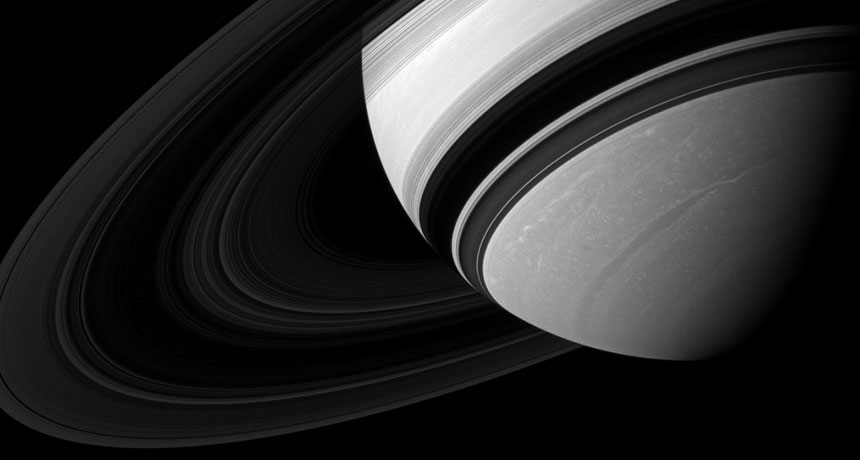Ringing rings reveal Saturn’s innards
Vibrations induced by planet send signals about interior’s structure

RINGED GIANT Saturn’s rings cast a shadow on the planet in a 2012 Cassini spacecraft photo. Subtle vibrations in those rings are helping scientists explore the structure of the gas giant’s interior.
NASA/JPL-Caltech/Space Science Institute







